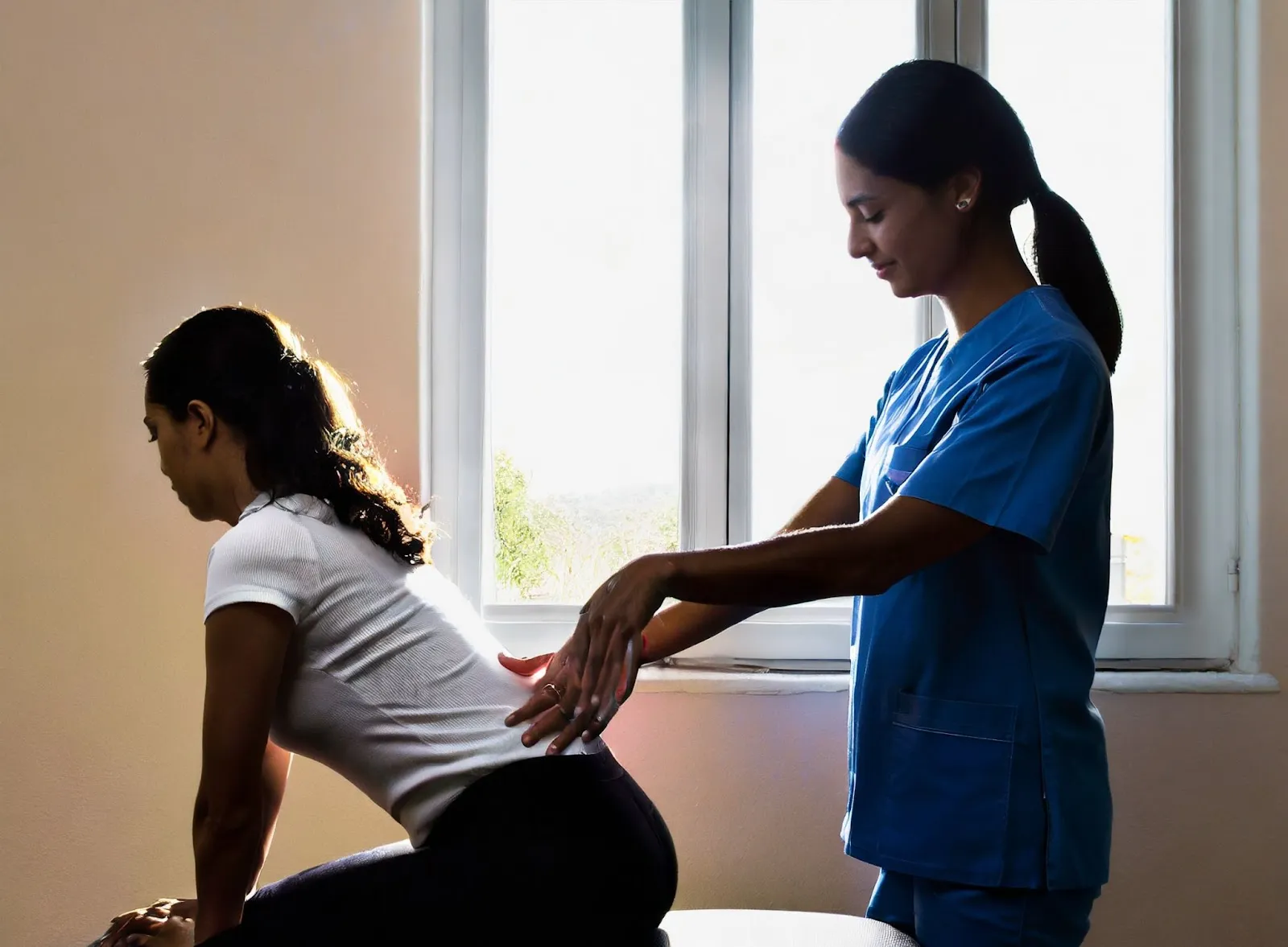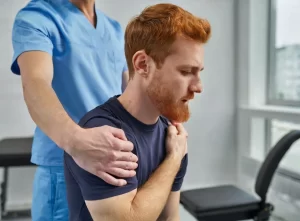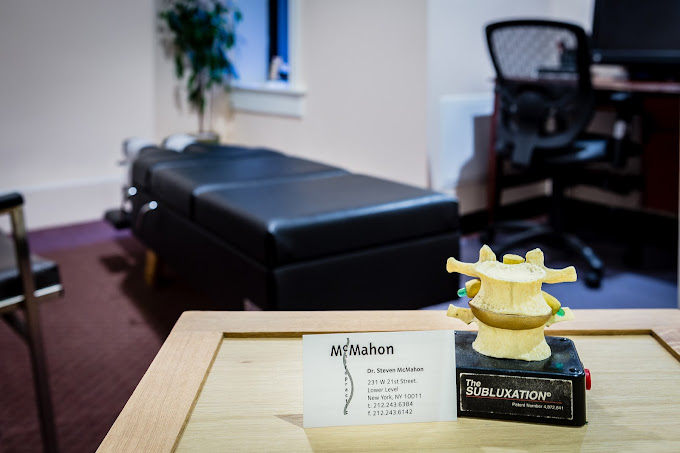Can A Chiropractor Help With Herniated Disc And Relieve Pain?
Can a chiropractor help with herniated disc? We offer treatments that can reduce inflammation and improve mobility. Get relief for your herniated disc today!
A herniated disc can cause tremendous pain, but that doesn’t mean that you have to suffer through it. Chiropractic treatment is a non-invasive and natural way to reduce pain and improve your life. Here, you’ll learn how a truly exceptional chiropractor can help with herniated discs and relieve the pain associated with them. We’ll provide a checklist of items to consider when seeking out chiropractic treatment for your herniated disc, as well as some tips on how to find the right chiropractor for you. We’ll also discuss what kinds of treatments might be best for treating your specific condition so that you can make a decision regarding your healthcare.
Understanding Herniated Discs
A herniated disc is when one of the discs in the spine gets damaged or ruptured. Age-related wear and tear, a traumatic injury, or excessive stress on the joint are just a few causes of this. When this occurs, the material inside the disc can leak out and press against surrounding nerves. This pressure can lead to feelings of discomfort and burning back pain. Common symptoms connected with a herniated disc include persistent pain in the lower back that radiates down into one or both legs, muscle weakness localized to one side of the body, tingling sensations or numbness in either leg, and difficulty walking or standing for long time.
If you believe you may be experiencing a herniated disc, it’s important to seek medical care from your doctor or other healthcare provider as soon as possible.
What Causes A Disc Protrusion?
There are numerous causes of disc protrusions, including aging-related wear and tear, trauma from an accident, or degenerative changes brought on by disease. To help diagnose and treat a disc protrusion, your doctor may order some imaging tests, such as an MRI or CT scan. Treatment of this will depend on the severity of the injury and may include physical therapy, anti-inflammatory medications, and more. Here are the key factors that contribute to disc protrusion:
Age-Related Degeneration
As we get older, the intervertebral discs between our vertebrae can start to break down due to natural aging processes. Our discs are made up of a tough outer wall made of collagen and elastin fibers that surrounds a soft, gel-like center. With age, the water content in the disc decreases while the collagen and elastin fibers become more brittle and rigid. This decrease in water content reduces the disc’s elasticity, making it more prone to injury. These age-related changes can also reduce the shock-absorbing capacity of the disc, which can lead to excessive stress on adjacent vertebral bones and cause them to move out of their original alignment. This misalignment can result in a herniated or protruding disc.
Trauma Or Injury
The most common cause of disc protrusion is acute physical trauma or injury. This type of damage can occur from direct impacts to the spine, such as a car accident, a fall from a certain height, or excessive weights being lifted. Even activities with less impact, such as repetitive bending and twisting, can over time lead to disc prolapse. These movements can tear the annulus fibrosus, which is the tough outer wall made of collagen and elastin fibers that surrounds the soft gel-like center in our discs. This tear can cause the inner gel-like material to escape outward and push against nerve roots, causing pain or other symptoms.
Repetitive Stress
Repetitive stress is a major factor in disc protrusion, and activities that involve the same movements over and over can cause damage to spinal discs. Occupations such as factory line work, construction, or manual labor that require long hours of repetitive bending, lifting, or twisting can put the spine at risk for disc injury. Even certain sports activities may lead to disc prolapse if they involve repeated motions that are hard on the spine, like gymnastics, weightlifting, soccer, hockey, and football. The more intense the activity with the same motion is performed over time, the higher the chance of injury becomes.
Poor Posture
Poor posture is the leading cause of disc protrusion. Slouching or slumping, hunching over a desk for long periods of time, or sitting in an awkward position can cause stress and strain on the spine that cause discs to bulge out. This can lead to some pain, numbness, and other symptoms such as muscle spasms. Practical tips and advice for maintaining good posture include regularly checking your posture throughout the day, avoiding sitting in one position for too long, standing up during breaks to stretch and move around, adjusting your workspace to ensure you are sitting comfortably without straining your back muscles or joints, and consulting with a medical professional if any pain occurs.
Genetics
It is significant to note that a variety of factors, including age and lifestyle choices, can contribute to disc degeneration and herniations. Genetics also plays a part. Studies have revealed potential genetic links to certain spinal conditions like scoliosis, spondylitis ankylopoietica, and Scheuermann’s disease. There is also evidence that hereditary connective tissue disorders may increase the risk of disc herniation or degeneration. When it comes to preventive care for those with a higher risk of disc problems due to their genetics, it is important to stay active and keep one’s spine flexible through regular stretching and exercise.
Obesity
Excess body weight puts additional stress on the spine as a result of increased pressure on the vertebral discs. This can cause disc protrusion and further cause pain and discomfort in the lower back. Additionally, these people are more likely to suffer from disc herniation due to the increased load on their spines. To manage body weight and decrease the risk of developing disc herniations, it is important to maintain a balanced diet and exercise regularly.
Occupational Factors
Certain occupations can also cause excessive strain on the spine due to long periods of sitting, bending forward or backward, and/or lifting heavy objects. This increases the risk of disc protrusion as it causes compression of the vertebral column. Thus, those whose job involves long hours of sitting should try to take regular breaks throughout the day to stretch and move around. Additionally, those who have to lift heavy items should practice proper posture and use proper lifting techniques to avoid any undue strain on their back. Moreover, they should always be aware of their limits and never lift more than what is safe.
Inflammation And Disease
Certain medical conditions involving inflammation or disease can also increase the risk of spine problems. These include autoimmune diseases such as ankylosing spondylitis, rheumatoid arthritis, and psoriatic arthritis, which cause inflammation in the joints, muscles, and other structures of the body. Additionally, certain infections, such as spinal tuberculosis, can also lead to disc herniation due to their effect on the vertebral column. Diabetes is another condition that may affect spinal health; it can cause degeneration of intervertebral discs due to damage from high sugar levels in the bloodstream.
How Chiropractic Approach Treats Herniated Discs
The chiropractic approach to treating herniated discs is non-invasive and focuses on improving spinal health and reducing pain. Chiropractors use a variety of treating techniques, including manual adjustments, manipulations, soft tissue therapies, and lifestyle changes, to help restore normal alignment and movement of the spine. Here are some specific treatments that a chiropractor may use to address herniated discs:
Access The Extend Of Damage
The first step in treating this condition is to determine the extent of the damage. This includes taking images of the spine and performing physical examinations to identify which discs are affected, their size, and where they’re located in relation to other vertebrae. In addition, a chiropractor may perform a variety of tests, such as various motion tests, postural assessments, muscle testing, and neurological exams, to assess the degree of damage to the spine. These tests help create an accurate diagnosis that allows the chiropractor to develop a personalized treatment plan for each patient.
Spinal Adjustments And Realignments
Once the extent of the damage has been determined, the chiropractor can start to formulate a well-rounded treatment plan. Commonly included in such plans are spinal adjustments and realignments. This type of treatment utilizes low-force manipulation to restore movement to stiff joints and increase the range of motion of affected sections of the spine. The goal is to reduce pressure on pinched nerves or discs, thereby relieving pain and improving overall function. In addition, spinal adjustments may help reduce inflammation by increasing circulation in the affected area. By manipulating ligaments and muscles around injured discs, this method can also provide relief from herniated disc pain as it encourages the body’s natural ability to heal itself.
Therapeutic Exercises And Stretches
Therapeutic exercises and stretches are an integral part of a well-rounded herniated disc treatment plan. Exercises and stretches help to strengthen the spine, improve flexibility, and support recovery from a herniated disc. Core strengthening exercises, like those that target the abdominal muscles or glutes, can help support the spine by providing additional stability, while gentle stretching can help reduce aches and improve range of motion in affected areas. Specific examples of exercises and stretches include bird dogs, planks, side planks, and cobra poses. When done properly with the guidance of a physical therapist or chiropractor, these exercises can provide relief from herniated disc pain and encourage natural healing processes in the body.
Promoting Natural Healing And Pain Relief
In addition to physical exercises and stretches, certain lifestyle changes can also help promote natural healing from a herniated disc. Dietary adjustments that focus on consuming anti-inflammatory foods like fish, vegetables, nuts, and healthy fats can reduce the pain and swelling associated with herniated discs. This can be supplemented with natural supplements such as turmeric or omega-3 fatty acids for further relief.
It is also important to manage stress levels while dealing with a painful herniated disc. Stress management techniques, including yoga, meditation, and mindfulness, can reduce muscle tension and improve mental wellbeing, which in turn helps the body cope better with the symptoms of a herniated disc. Adequate rest is also essential for the body’s natural healing process, as it gives time for the inflammation in affected areas to subside, which leads to reduced pain and discomfort. By implementing these methods along with regular physical exercise and stretching routines, one can ensure their body has everything it needs to recover from a herniated disc without medical intervention.
Other Complementary Treatment
Massage therapy is a widely used complementary treatment for herniated discs, as it helps reduce inflammation, improves circulation, and encourages the body’s natural healing processes. Massage also helps break up scar tissue around affected areas, which can help alleviate pain and discomfort. Hot and cold compresses are also recommended for managing herniated disc symptoms due to their ability to reduce inflammation and offer temporary relief from pain.
Potential Benefits And Risks Of Chiropractic Treatment For Herniated Discs
There are a number of potential benefits associated with chiropractic treatment for herniated discs, as well as some risks that should be considered before beginning treatment. Here are some of the potential benefits and risks to consider:
Non-Invasive And Drug-Free Approach
Chiropractic care for herniated discs offers a non-invasive alternative to surgery or pharmaceuticals, providing an excellent drug-free option. This approach is particularly beneficial for individuals concerned about medication side effects or potential dependency on pain relief medications. Here are some of the specific benefits of a drug-free approach:
- Chiropractic adjustments reduce pain naturally through spinal manipulation and mobilization, rather than relying on medication to mask the issue.
- Unlike surgery, there is no chance of infection, tissue damage, or nerve injury associated with chiropractic care.
- There is no need to worry about developing a dependency on medications when using chiropractic treatment as part of your healing plan.
- Regular chiropractic treatments can help restore normal movement in the spine and prevent further injury or degeneration.
Possible Side Effects Or Contraindications
Although chiropractic treatment is generally considered safe, some people may experience soreness or temporary discomfort. This is usually a result of the body’s adjustment to the realignment of the spine but should subside shortly after treatment. Chiropractic care may not be suitable or safe for certain patients, such as those with osteoporosis, rheumatoid arthritis, spinal cord compression, cancer in or near the spine, and those on certain types of blood-thinning medications. It is important to consult with your healthcare provider before undergoing any type of chiropractic treatment to ensure safety and efficacy.
Get The Best Chiropractic Care For A Herniated Disc!
Chiropractic care may be beneficial for those with a herniated disc, as it can reduce pain, inflammation, and tension in the affected area. By realigning the spine, chiropractic care helps restore proper body function, allowing patients to return to their typical daily activities. However, it is important for readers to consult with an expert chiropractor to determine if this treatment option is right for them. Our expert chiropractor is experienced in providing safe and effective chiropractic care that can help manage the pain of a herniated disc and improve the overall quality of life. Contact us today to schedule an appointment!





